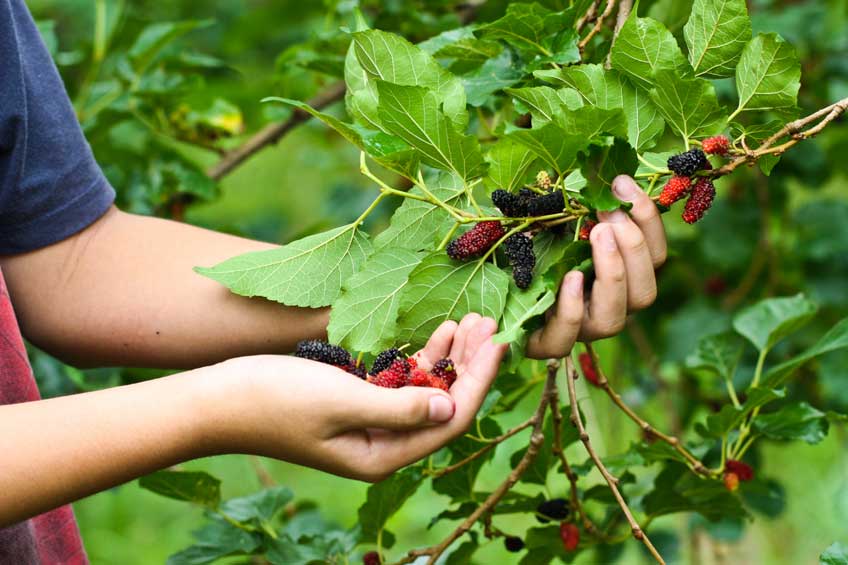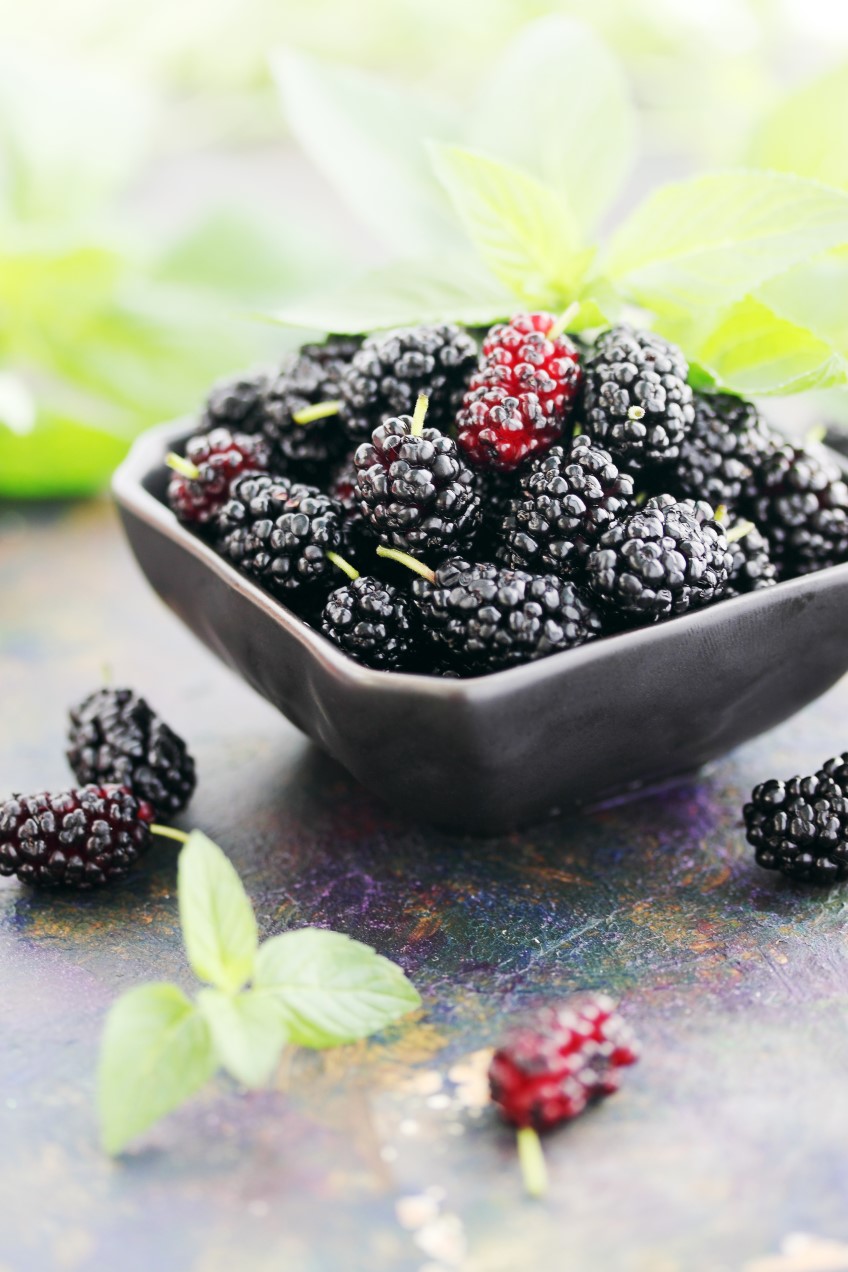No summer goes by in the Ross family household without mulberry jam, mulberry pie, and swirled mulberry ice cream.
Fancy the menu? Take Linda’s tips on growing the hero ingredient.
As a child I mapped the spot of each mulberry tree in my neighbourhood so on summer afternoons on the way home from school we could help ourselves to the
fruit overhanging the fence. (Most were eaten: only some ended up as stains on school uniforms – the telltale signs of a mulberry fight!) No doubt
this experience is a factor in my belief that after-school mulberries are an integral part of an Australian childhood. Beyond supporting the children
of your neighbourhood though, your own mulberry gives you what you can’t easily buy. Mulberries are juicy, soft and fragile. They don’t transport well
so commercial growers are few and the delicious rewards of the mulberry are saved for gardeners.
![]()

Photo - Saichol Chandee/Shutterstock.com
Position
A mulberry (Morus nigra) is a deciduous, self-fertile tree growing from 5-20m. Width can extend from a well-pruned 3m to a neglected 10m! Mulberries
love growing in full sun. With their glossy, heart-shaped green leaves and pendulous branches they make a good shade tree, and are a good choice on
the western side of the house where they will help cool things down over summer. After a while the tree develops a lovely gnarled trunk.
Growing
Mulberries are vigorous, easy to grow and hardy. They grow anywhere but in the tropics and do best in moist and fertile soil. Like most fruit trees they
prefer a new planting area to be improved with a wheelbarrow of cow manure, or compost or soil conditioner, with a handful of blood and bone. Stake
a new tree for the first year to prevent wind damage. Water regularly for the first few years, and feed the tree late in winter with blood and bone.
Mulberries ripen over an extended period of time so you can enjoy the fruit for a month or so.
Pruning
We prune our mulberry very hard every winter to keep it contained, and to ensure that the fruit is reachable without a ladder. You might like a bit more
tree than us, but nevertheless trim out weak growth. Follow the winter prune with a feed and water.
A light prune after the harvest in summer is also advised.
If you don’t need the shade that mulberries offer, but you fancy the fruit, you can grow a mulberry as a shrub. In winter, cut down the leader to about
1.35-1.7m, just above some strong side-shoots. Use these side shoots to develop a framework of 8-10 branches, as for bush apples. You’re aiming for
an open, vase-shaped shrub. This way the fruit is on the outer v-shaped branches, and you don’t need to lean into the centre of the tree to harvest.

Photo - Malivan_Iuliia/Shutterstock.com
Varieties
Black English mulberry is the common black variety with strong flavour and messy juice.
Hick’s Fancy is a slightly smaller tree with dark red berries.
White Shahtoot (Morus macroura) has 10cm-long fruit with a sweet honey flavour.
White mulberry (Morus alba ‘Pendula’) is only grown as an ornamental, not for fruit.
Tips
- Net trees during fruiting to prevent birds devouring the crop.
- Mulch trees in spring with cow manure to feed and maintain root moisture.
- Wear gloves and old clothes when harvesting to avoid staining.
- Oops, forgot the gloves? Try rubbing stained fingers with an unripe mulberry to remove the colour.
Text: Linda Ross